Back to top: Overview
Introduction - contexts
Stratigraphy from this phase was found above the last use of the Akkadian period palace, when it was no longer is use as the royal palace. Additionally the area in front of the entrance to the ābi (A12), A14 had a stratum dating to this period. The period had no massive architecture as in previous periods but did produce evidence of a relatively open area with scattered walls and burials. In A16 two burials dating to this time period, a16 and a19, were found above the earlier stone pavement dating to the Akkadian period (A16a16 and A16a19). Also in A10 there were a number of tombs connected with this phase.
Back to top: Overview
Vessel shapes
In this period the shapes include conical cups with string cut bases continue from earlier phases but gradually decrease in number while conical cups with cut bases gradually replace them. Bowls with a rounded or sharp carination are more frequent in this phase (A10.26). Deep bowls with an ovoid body shape continue in this phase (A14q794-p1); at the same time deep bowls with a cylindrical body shape increase (A14q655-p5). Necked jars with both straight necks (A10.104) and flaring necks (A10q262-p7) are common but hole mouth jars and shouldered jars occurr infrequently. Now both medium and large jars can have a short straight restriction just below the rim making it easier to attach a covering (A16q683-p33).
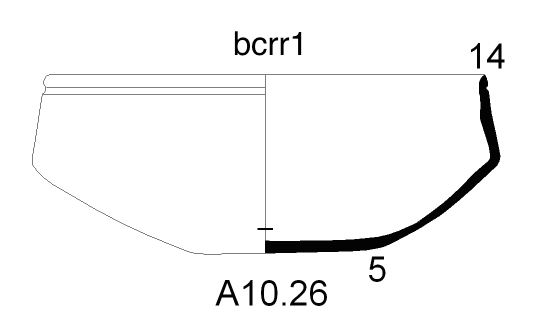 A10.26 |
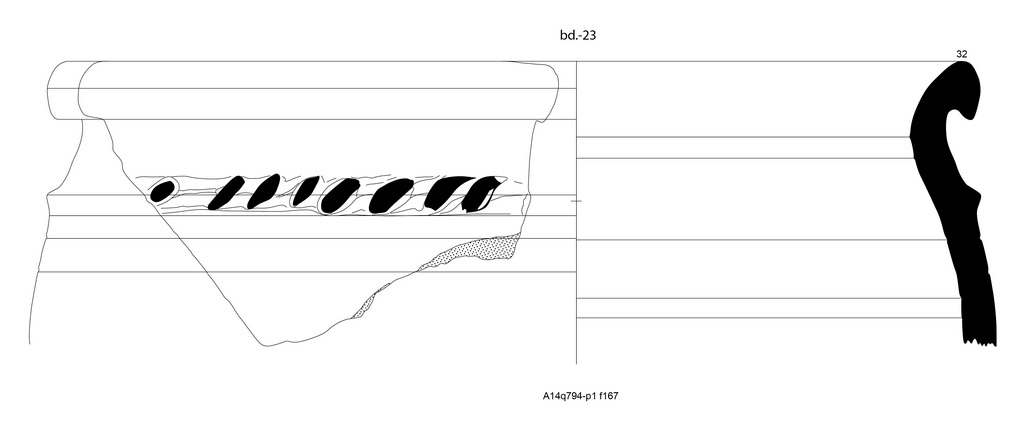 A14q794-p1 |
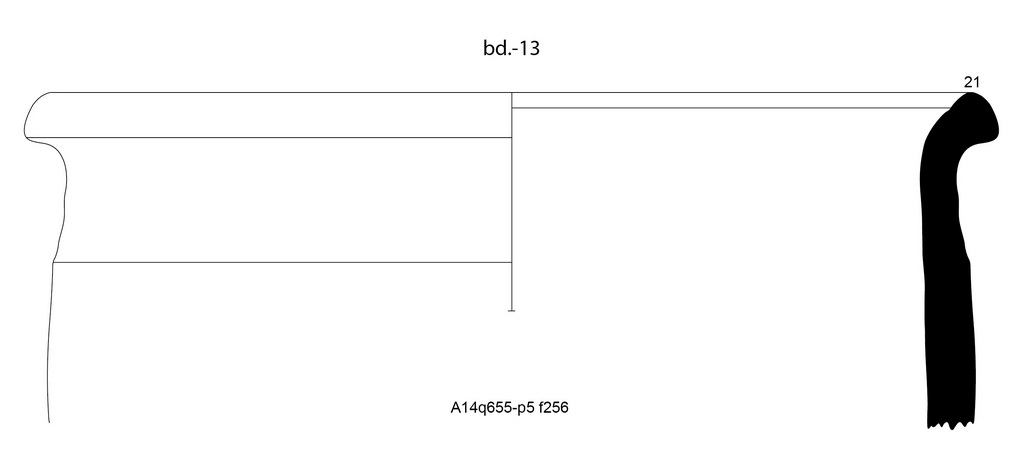 A14q655-p5 |
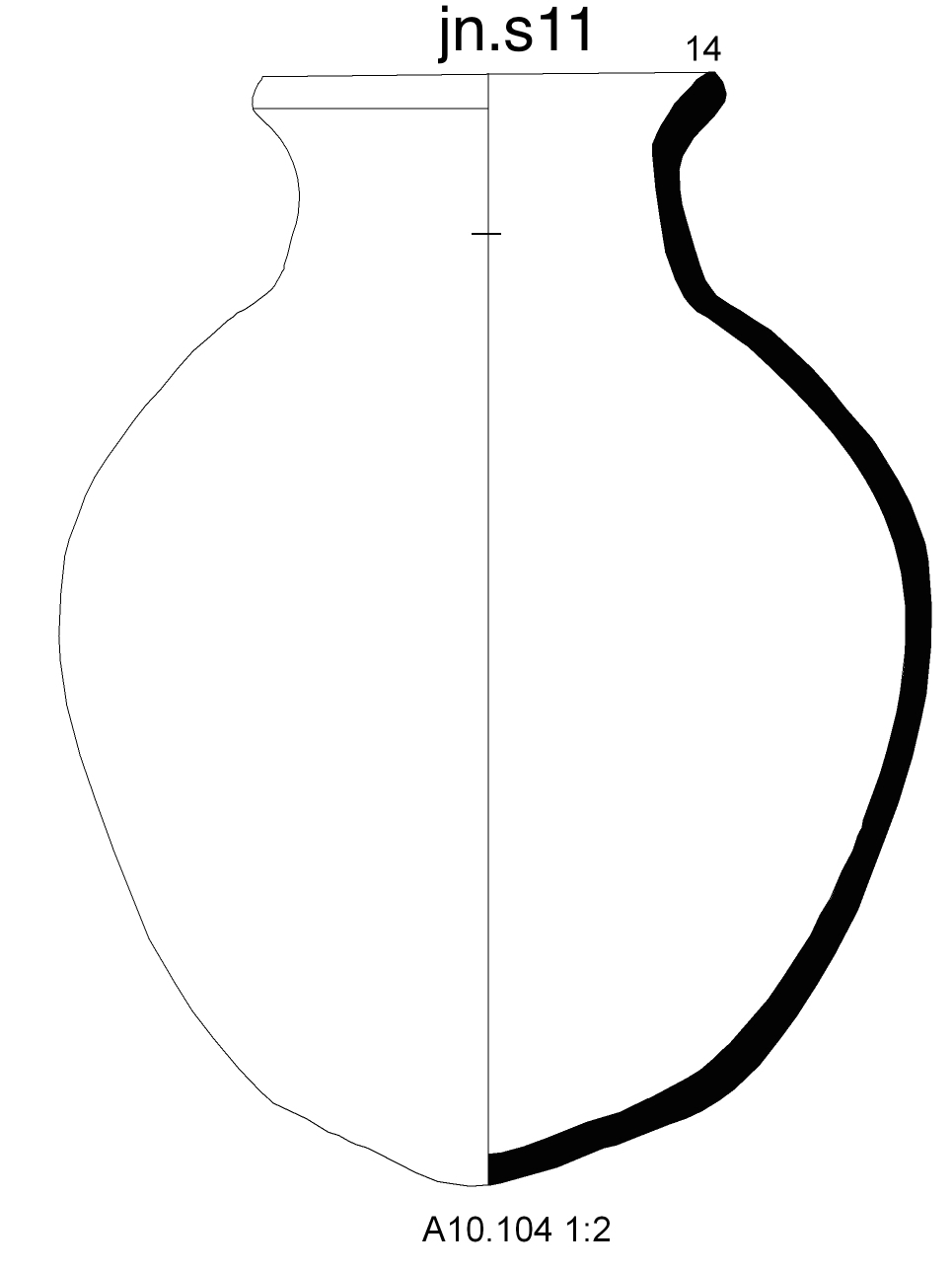 A10.104 |
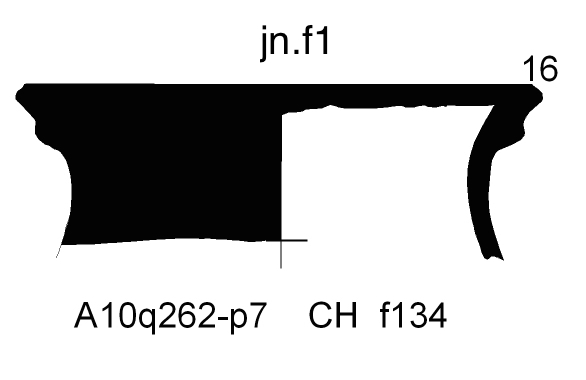 A10q262-p7 |
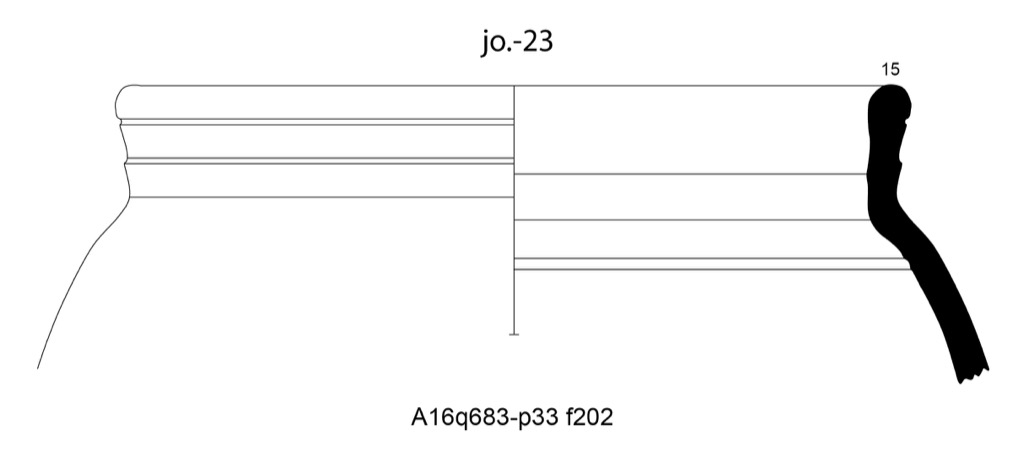 A16q683-p33 |
Back to top: Overview
Ware types
In the Ur III and Isin Larsa strata as well as in the tombs dating to this period Chaff Tempered ware (CH) was prevalent in jars and bowls. However in this period more calcite was added to the clay, the vessels in this ware were thinner walled and if there was a carbon core in was thinner and lighter in color. Also Red Calcite ware (RC) had a greater amount of added calcite than earlier and now could have black lithic temper. It was used for the most part in fashioning jars and bowls. The finer variety of this ware (RC1) was used for medium and small bowls and jars but even in this category RC was more common. Pebble Tempered ware (P) continued as the main cooking ware, especially for jars although a small number of other shapes could be made in this ware.
Back to top: Overview
Non-craft production
In the earlier phase (Phase 4a) some tombs in A16 and A10 contained ceramic vessels that were not of the same technical quality as the other ceramics from this same period at the site. (for apprenticeship and influence of earlier methods of ceramic production see apprenticeship).
This is clearly due to their being produced by individuals unskilled in making ceramics and in my opinion who only made these ceramics to honor the dead person buried in these tombs. This type of non-craft production has not been found outside tomb contexts. While most tombs had ceramic contents similar to living areas in the same period in Urkesh, some tombs had these crude vessels. These ceramics are not only mal-formed but are extremely heavy due to the poor clay composition, inclusions and subsequent treatment of the clay. This practice carried over into the Khabur period (A6.59) ).
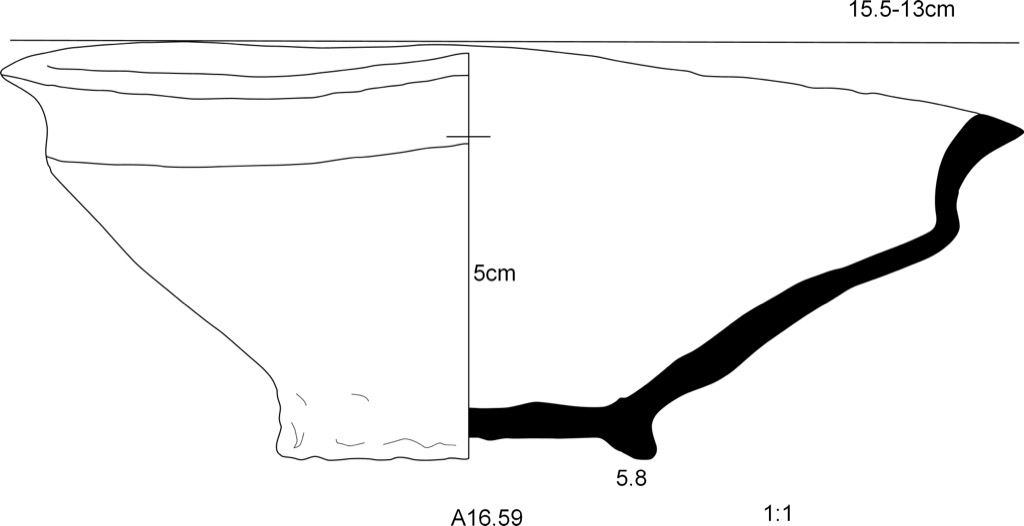
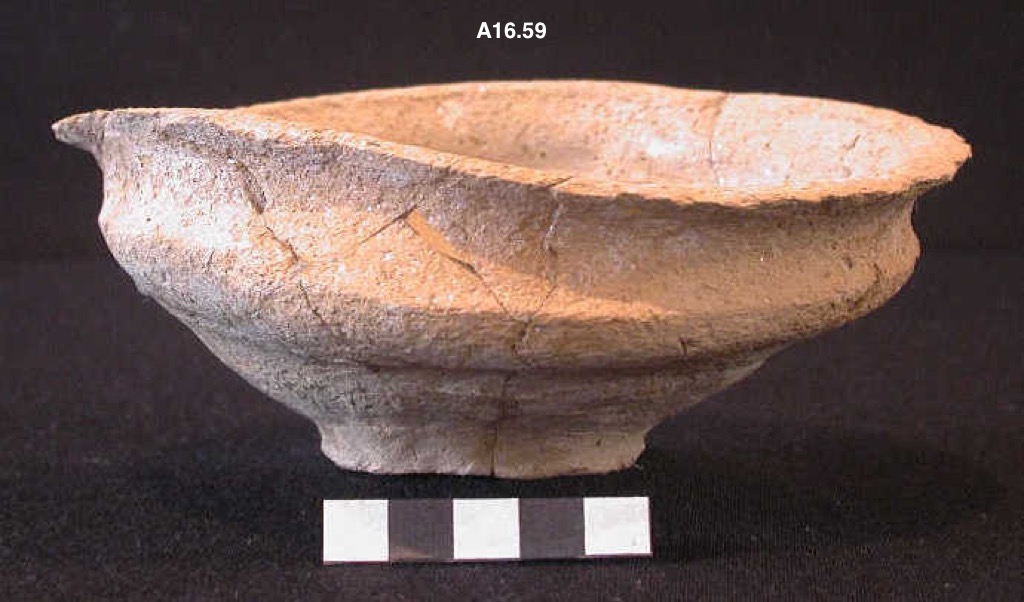 A16.59 |
Back to top: Overview
Bitumen use
It has been reported that bitumen sources are located near the site of Mozan and in this period they were exploited more than in any other phase. Bitumen appeared in this phase in a variety of uses: waterproofing, vessel repair (A6.248), and as a vehicle for bitumen-based painted designs. These painted designs, mostly found on jars, included solidly painted necks of medium necked jars (A10q262-p7), medium and large jars and some pots with painted rims sometimes extending below the rim, with large dots of the vessel body (A6q998.1)); small and medium jars with both painted necks or rims and large dots around the upper body (A6.17);), and amorphous designs which are rare.
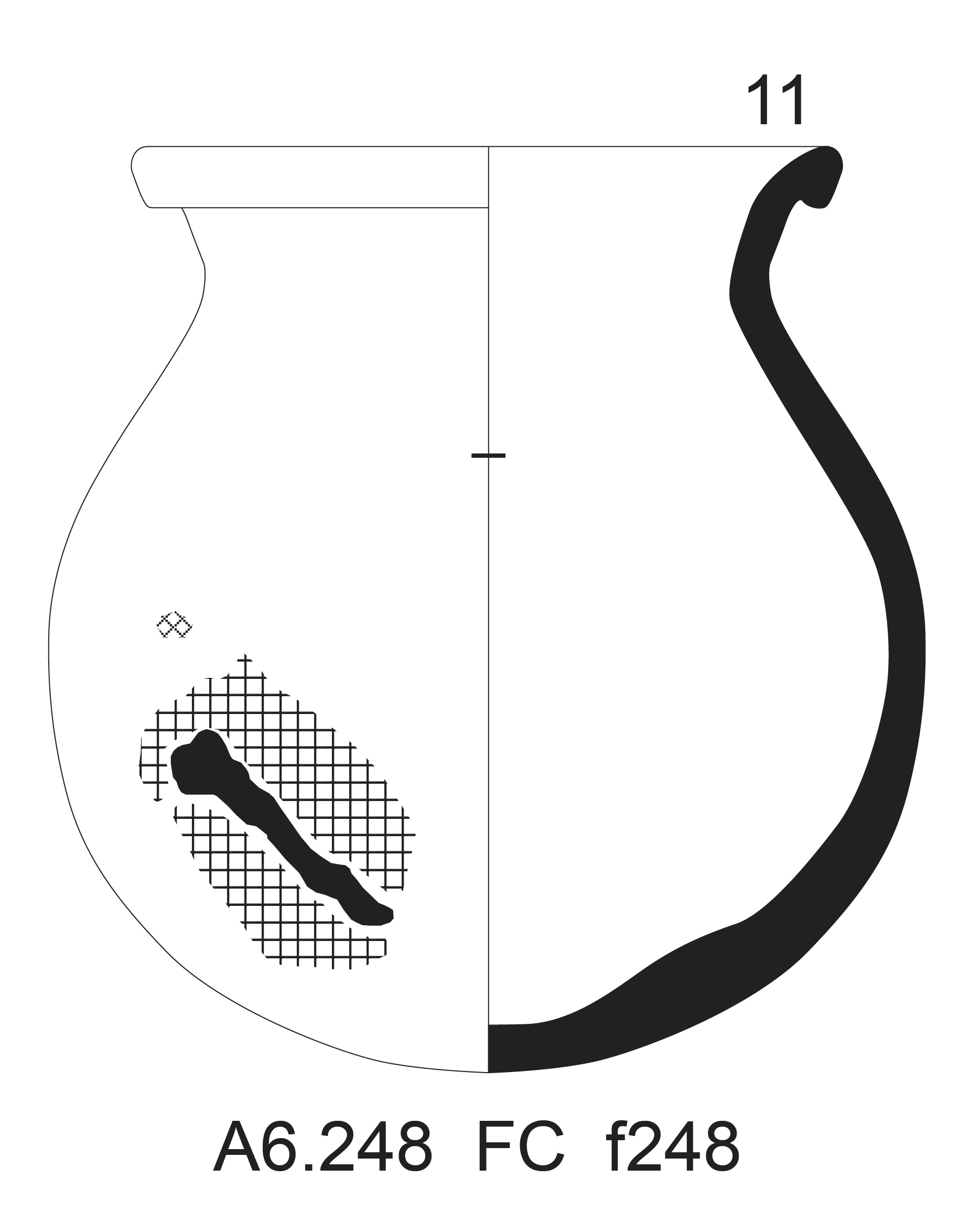 A6.248 |
 A10q262-p7 |
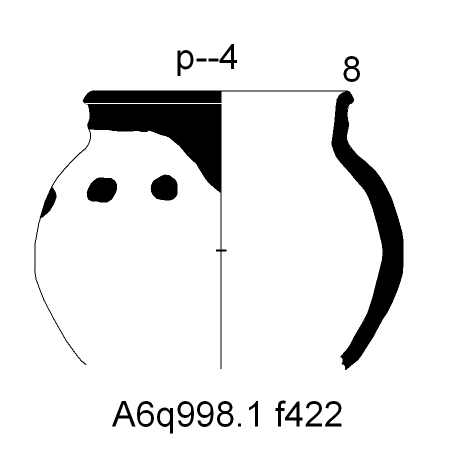 A6q998.1 |
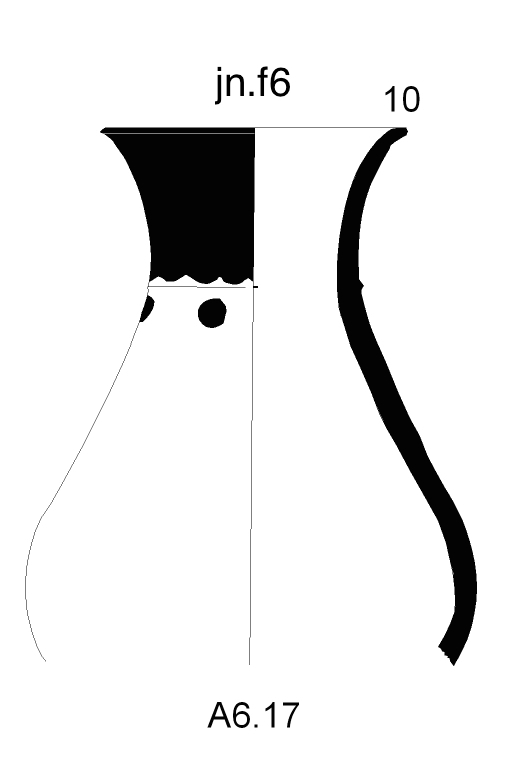 A6.17 |
Back to top: Overview
Decoration
Incised decoration is also found in this period on jar necks and upper bodies (A7q269-p1). The patterns are usually some type of wavy lines (A6q1006-p1) but some more complicated arrngement of geometrical decoration can occurr (A9q280-p11). These incised patterns can be combined with bitumen decorations. Ribbing also occurrs on the upper bodies of jars and on jar and bowl rims (A6.244). Deep bowls can sometimes have a line of rope decoration on the upper body.
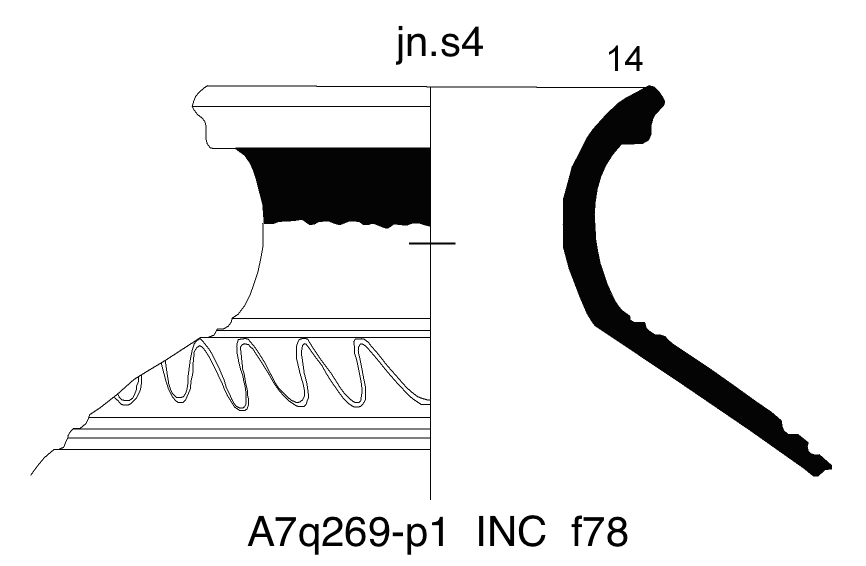 A7q269-p1 |
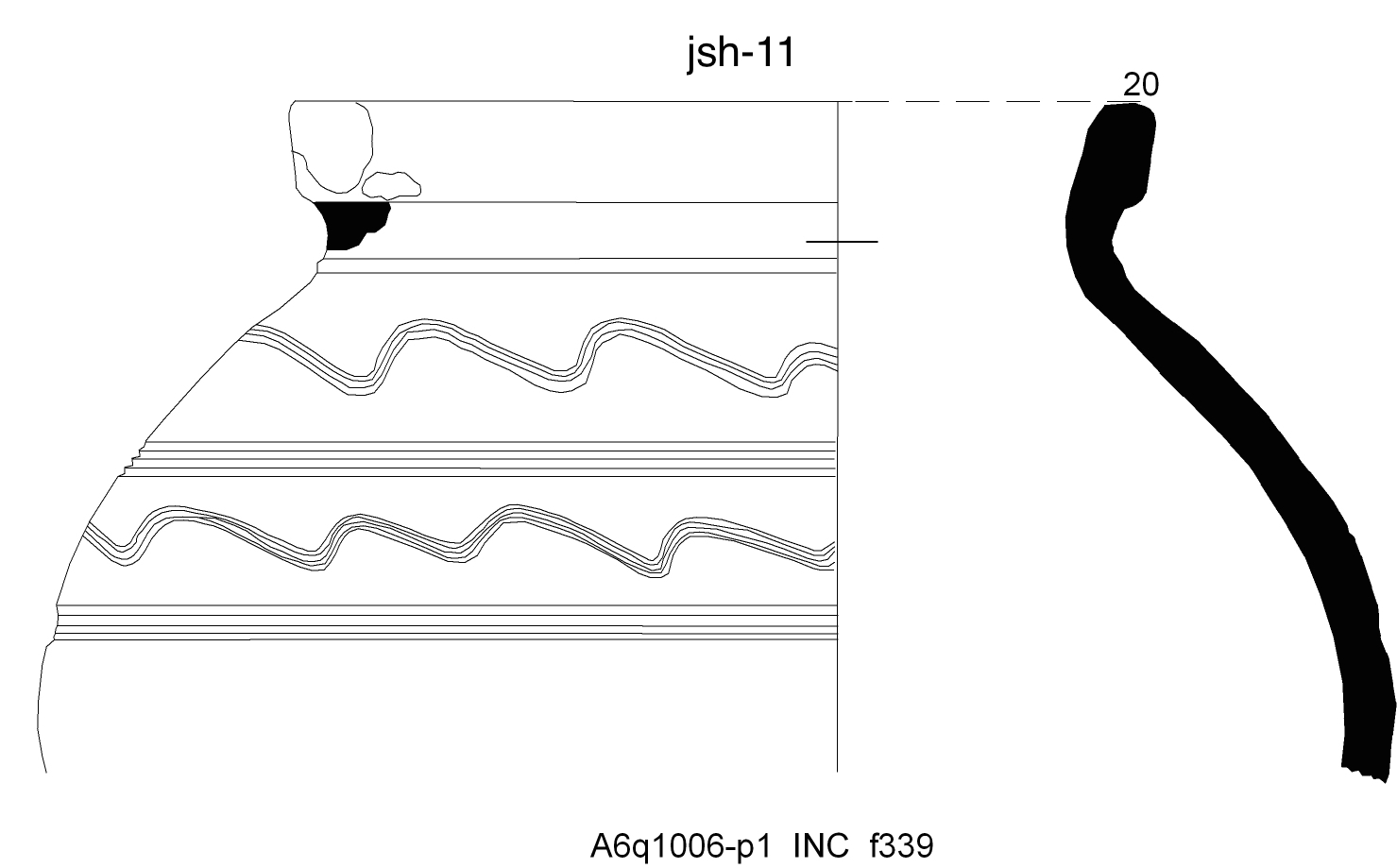 A6q1006-p1 |
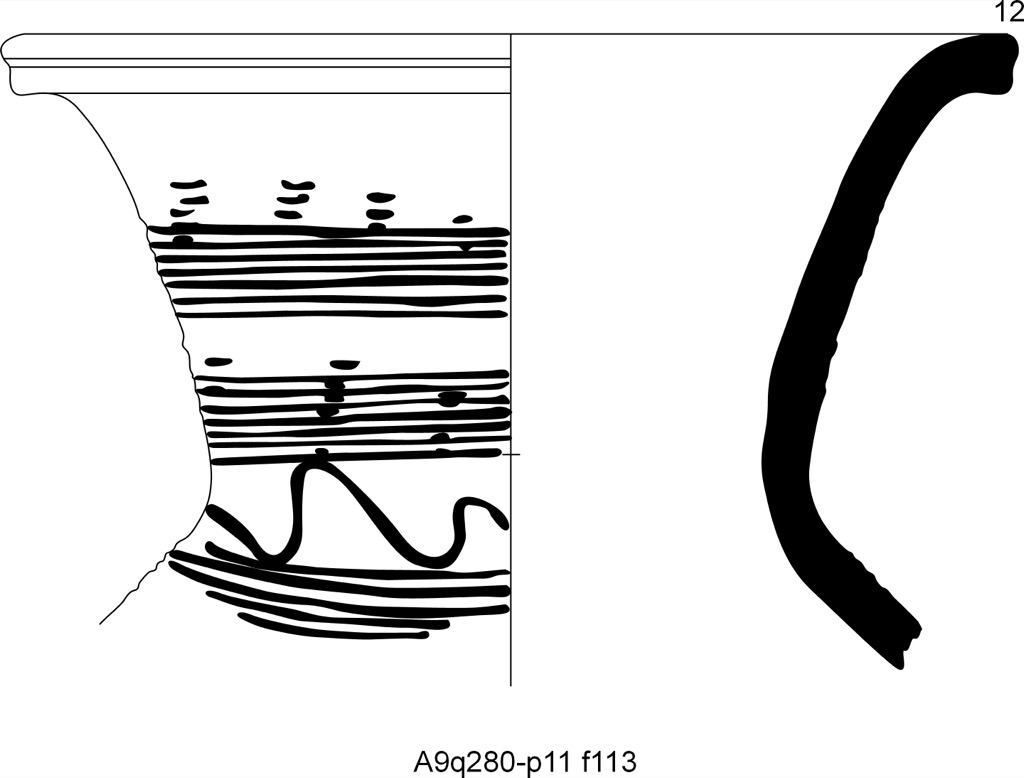 A9q280-p11 |
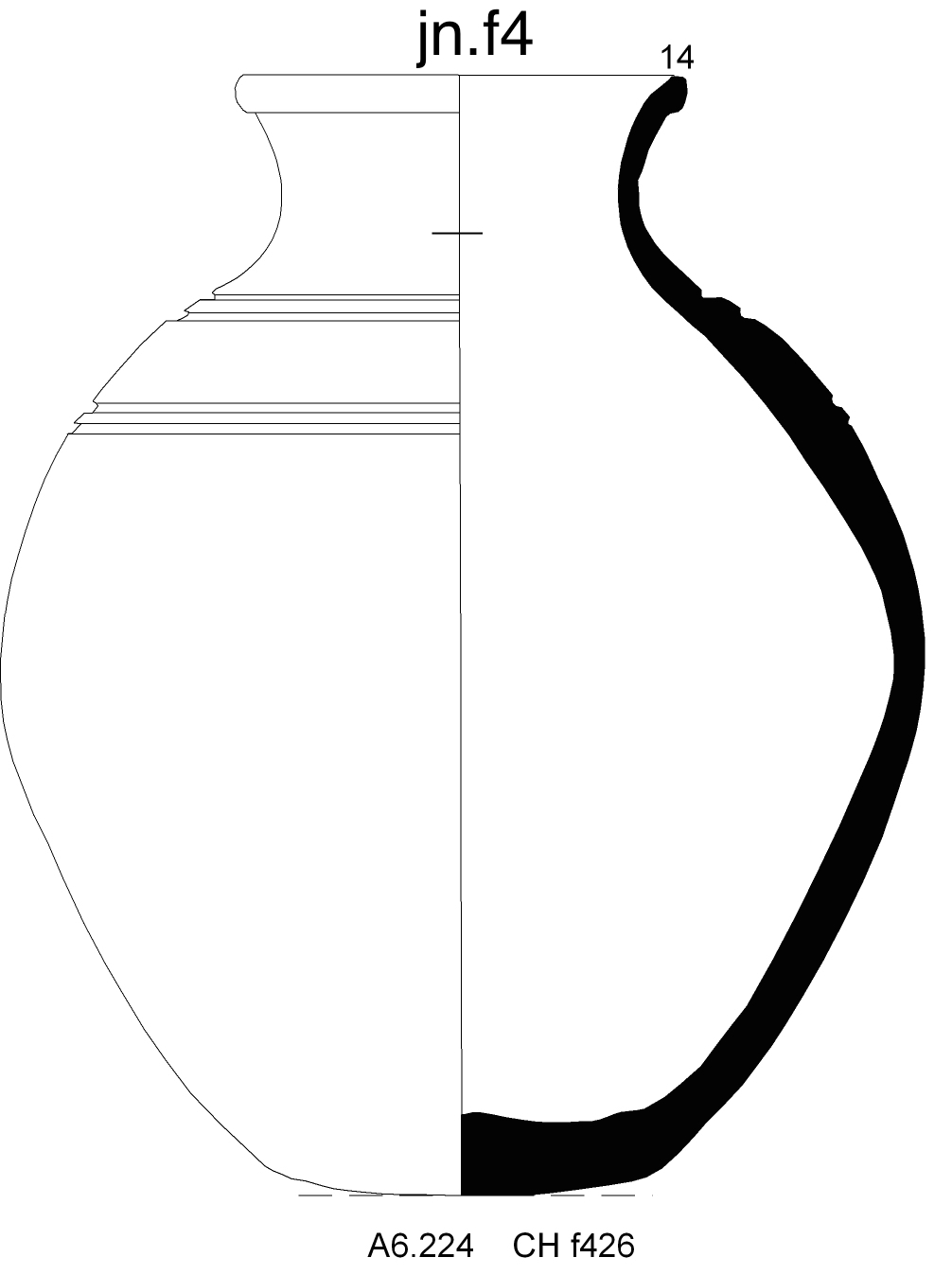 A6.224 |
Back to top: Overview